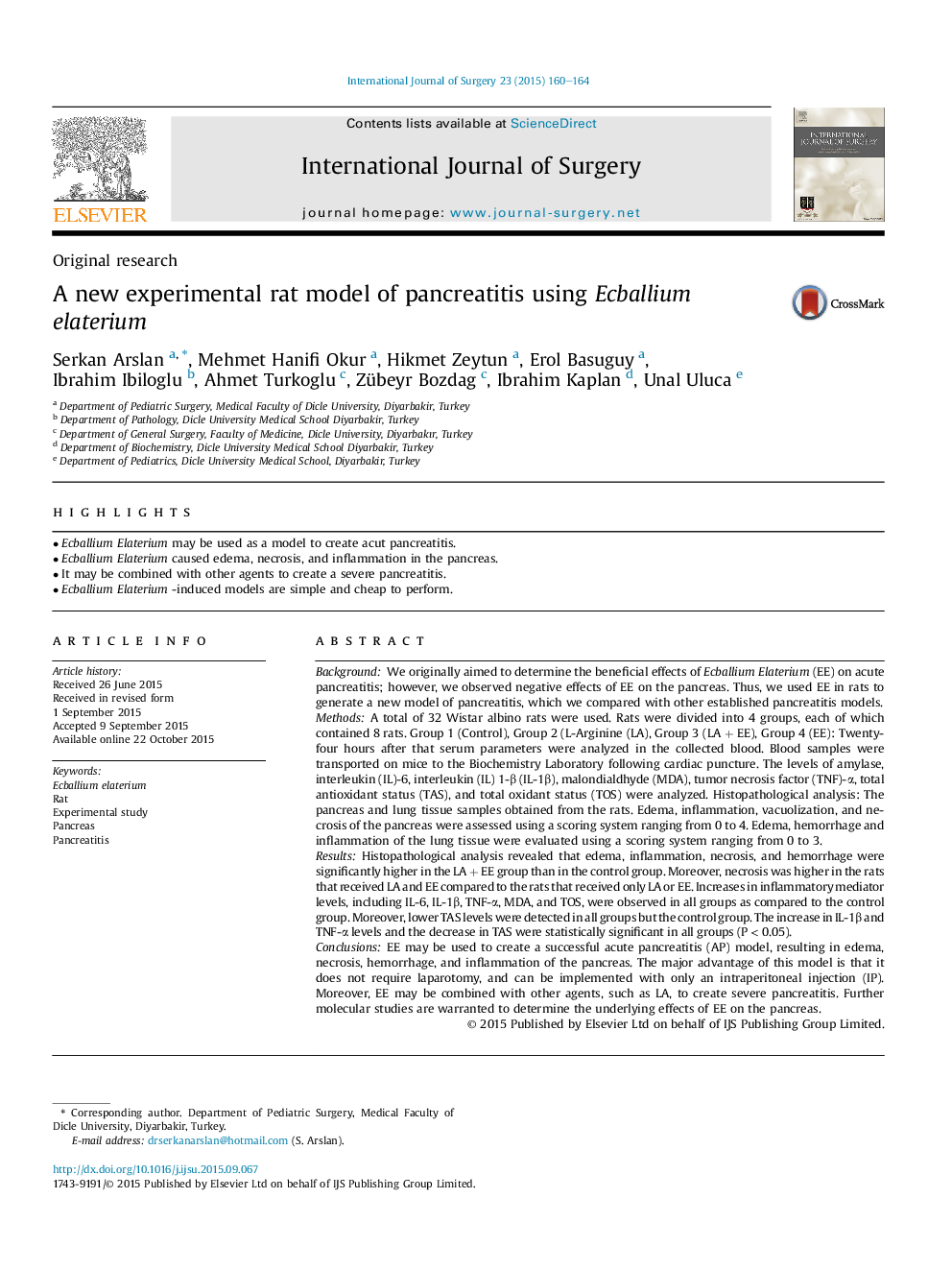| کد مقاله | کد نشریه | سال انتشار | مقاله انگلیسی | نسخه تمام متن |
|---|---|---|---|---|
| 6251272 | 1611968 | 2015 | 5 صفحه PDF | دانلود رایگان |

- Ecballium Elaterium may be used as a model to create acut pancreatitis.
- Ecballium Elaterium caused edema, necrosis, and inflammation in the pancreas.
- It may be combined with other agents to create a severe pancreatitis.
- Ecballium Elaterium -induced models are simple and cheap to perform.
BackgroundWe originally aimed to determine the beneficial effects of Ecballium Elaterium (EE) on acute pancreatitis; however, we observed negative effects of EE on the pancreas. Thus, we used EE in rats to generate a new model of pancreatitis, which we compared with other established pancreatitis models.MethodsA total of 32 Wistar albino rats were used. Rats were divided into 4 groups, each of which contained 8 rats. Group 1 (Control), Group 2 (L-Arginine (LA), Group 3 (LA + EE), Group 4 (EE): Twenty-four hours after that serum parameters were analyzed in the collected blood. Blood samples were transported on mice to the Biochemistry Laboratory following cardiac puncture. The levels of amylase, interleukin (IL)-6, interleukin (IL) 1-β (IL-1β), malondialdhyde (MDA), tumor necrosis factor (TNF)-α, total antioxidant status (TAS), and total oxidant status (TOS) were analyzed. Histopathological analysis: The pancreas and lung tissue samples obtained from the rats. Edema, inflammation, vacuolization, and necrosis of the pancreas were assessed using a scoring system ranging from 0 to 4. Edema, hemorrhage and inflammation of the lung tissue were evaluated using a scoring system ranging from 0 to 3.ResultsHistopathological analysis revealed that edema, inflammation, necrosis, and hemorrhage were significantly higher in the LA + EE group than in the control group. Moreover, necrosis was higher in the rats that received LA and EE compared to the rats that received only LA or EE. Increases in inflammatory mediator levels, including IL-6, IL-1β, TNF-α, MDA, and TOS, were observed in all groups as compared to the control group. Moreover, lower TAS levels were detected in all groups but the control group. The increase in IL-1β and TNF-α levels and the decrease in TAS were statistically significant in all groups (P < 0.05).ConclusionsEE may be used to create a successful acute pancreatitis (AP) model, resulting in edema, necrosis, hemorrhage, and inflammation of the pancreas. The major advantage of this model is that it does not require laparotomy, and can be implemented with only an intraperitoneal injection (IP). Moreover, EE may be combined with other agents, such as LA, to create severe pancreatitis. Further molecular studies are warranted to determine the underlying effects of EE on the pancreas.
Journal: International Journal of Surgery - Volume 23, Part A, November 2015, Pages 160-164